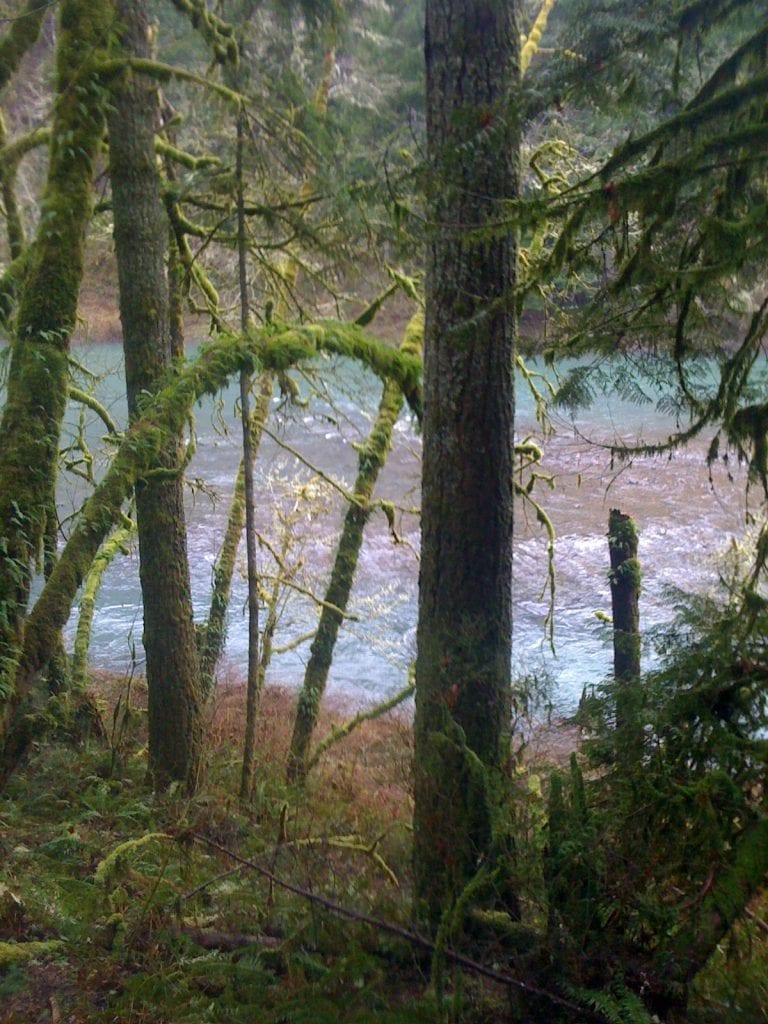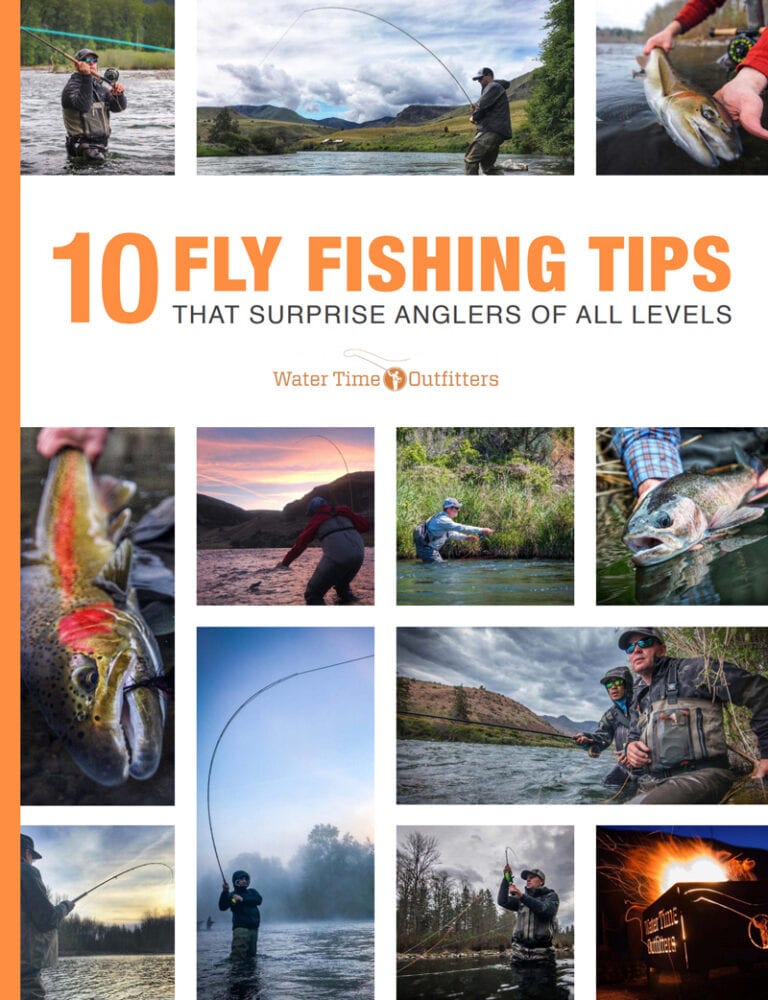High Water Tactics for Winter Steelhead

There’s no doubt about it the fluctuations of winter water conditions can make steelhead fishing the cold part of the year challenging. Have you experienced the skunk of high water keeping you from fishing success? Having the right tools and tricks can make a high water day a hey day instead! Here are a few tactics and tricks to help your high water steelhead success.
First, find the right water. With high flows the normal go-to gravy runs are often too fast to hold fish. The places that you wade through soft dead water during normal flows might be your new hot spot in high flows. Speed, depth and structure are the main components to good steelhead water and that still applies during heavy high water flows. Finding those soft spots can be difficult; sometimes it’s because they are few and far between. Find the right spot and you may have struck gold. When the river is just ripping fast for miles and you’ve found a sweet soft water zone with water 3-4′ deep and walking speed your in the money! Look for soft spots that are away from heavy current edges; often these are places where there are wide gravel bars and in normal flows you’d be walking on dry rocks. When the water is really high-that’s steelhead heaven!
Water clarity is a big part of your success with winter flows. When we have a big rain and the river floods large amounts of sediment are being carried down river making the river muddy. As the river drops and begins to clear it goes through various stages of clarity. Fishing brown water that you can’t see 2″ into is a waste of time but as that water starts to clear and you can see your boots in knee deep water your getting there. If you can barely see your boots waist deep- game on! Visibility is key for success, it’s pretty simple the fish have to see your fly before they’ll eat it! As the water clears fish are often aggressive, moving and most likely to respond to your fly.
Use the right gear-when the water is high having the right sink tip is key. This might mean a longer more aggressive sink tip or possibly a lighter sink tip. First, heavier-if you’ve got water with good structure in it-like big boulders and the speed is right; you just might need to keep the fly a bit deeper for fish to see it. This may require a 12.5′ T-14 instead of a more average 10′ T11 sink tip. This may also be a time to utilize a FIST line or integrated Skagit line to help get the fly deeper and slow it down a bit. Often times the reverse is true; a lighter tip is required. Weird you might say! However, consider some of your best spots will be those gravel bars that are barely covered or even dry when the water is normal or low. This softer water is going to hold resting fish. Swinging through it with a heavy tip will often result in a bunch of snags or swinging the fly to fast. A lighter tip allows you to hold it in the zone bring it across slow and deep with a hover over the fish’s nose.
Use these tips to help you find more fish when the water is high. Winter water levels are very dynamic, hiring a guide can be the best way to get on the highest percentage water for the current conditions. Find great guides for Oregon rivers at watertimeoutfitters.com
Best of luck with your high water winter steelhead angling!
Rob Crandall

